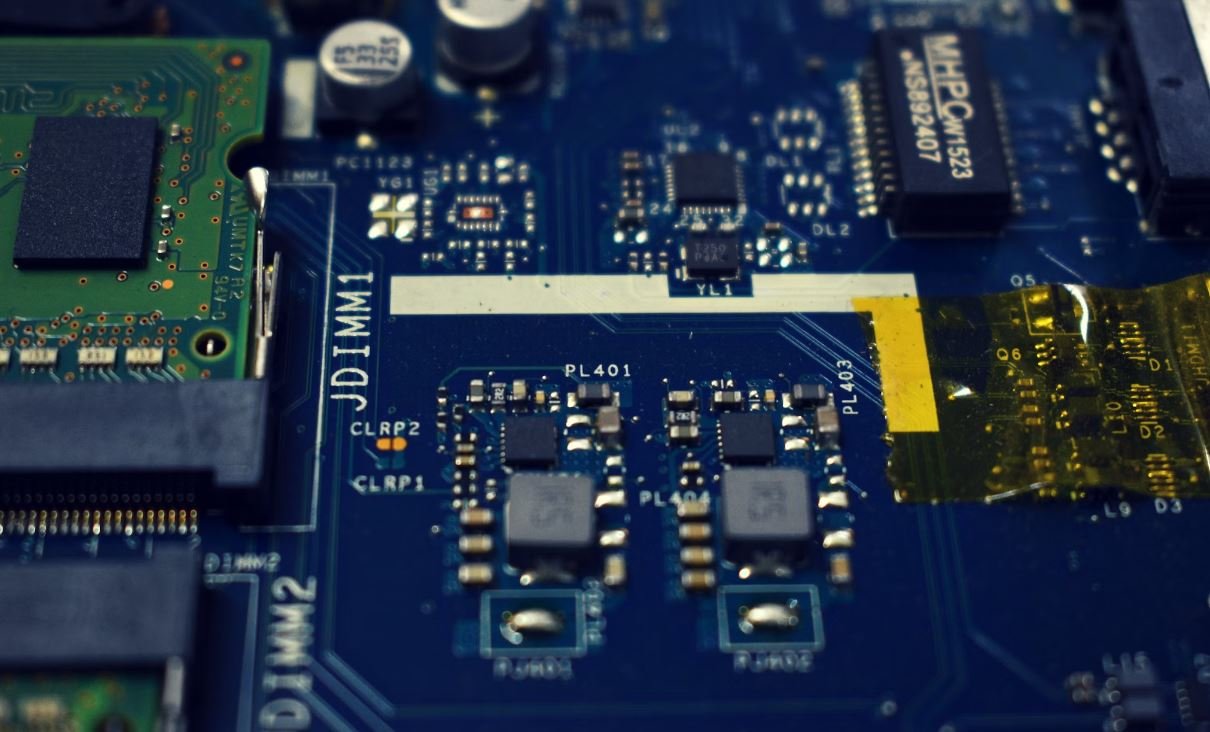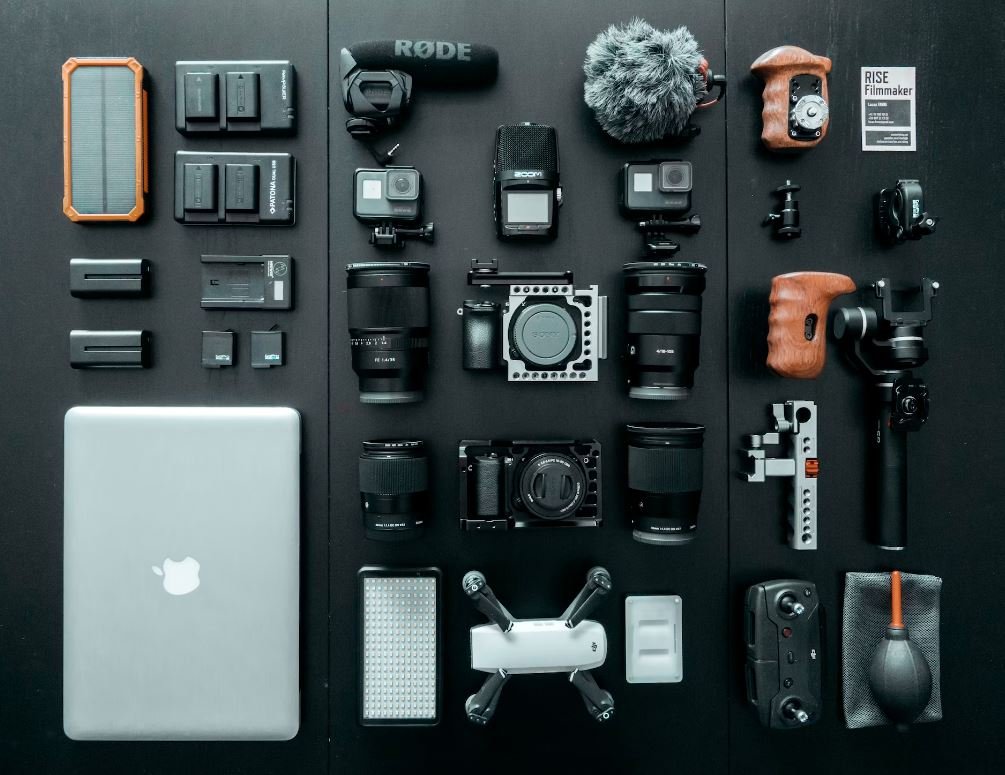AI Video Surveillance
Introduction
With the advancement of Artificial Intelligence (AI), video surveillance systems have become more intelligent and effective in ensuring safety and security in various environments. AI-powered video surveillance solutions leverage advanced algorithms to analyze video footage in real-time, enabling quicker response times and more accurate threat detection.
Key Takeaways
- AI video surveillance systems use advanced algorithms for real-time video analysis.
- These systems enhance threat detection and response time.
- AI video surveillance is applicable in various environments, including public spaces, retail stores, and industrial facilities.
Benefits of AI Video Surveillance
AI video surveillance systems offer several benefits over traditional surveillance systems. Firstly, **they can automatically identify and classify objects**, allowing for targeted monitoring and reducing false alarms. Additionally, **AI algorithms can detect suspicious behaviors and events**, such as loitering or unauthorized access, enhancing security measures. Moreover, **real-time analytics enable immediate response and intervention**, minimizing potential risks and damages. Furthermore, **AI can facilitate data-driven decision-making**, providing valuable insights for process improvement and optimization.
An interesting aspect is that AI video surveillance systems can **continuously learn and adapt** to evolving security challenges, improving system performance over time.
Applications of AI Video Surveillance
AI video surveillance has wide-ranging applications in various sectors. In public spaces, **it can help prevent crimes and provide enhanced safety to citizens**. Retail stores can benefit from AI video analytics by **identifying shoplifters and monitoring customer behaviors** to optimize store layout and merchandising strategies. Industrial facilities can utilize AI video surveillance for **monitoring equipment, detecting anomalies, and ensuring employee safety**. Additionally, **traffic management systems** can leverage AI video analysis to optimize traffic flow and detect accidents in real-time, enabling efficient emergency response.
AI Video Surveillance vs. Traditional Surveillance
AI video surveillance systems outperform traditional surveillance systems in multiple aspects. While traditional systems rely primarily on human monitoring, AI video surveillance combines **human intelligence with machine efficiency**, resulting in more accurate and reliable security measures. Additionally, **AI systems can process large amounts of video data in real-time**, enabling faster threat detection and response. Moreover, **AI algorithms can handle complex scenarios and provide more comprehensive insights**, surpassing the capabilities of traditional systems.
Data Security and Privacy Concerns
While AI video surveillance offers remarkable benefits, it also raises concerns about data security and privacy. It is crucial to establish **strict access and encryption protocols** to prevent unauthorized access to sensitive video data. Furthermore, **compliance with legal regulations and guidelines**, such as the General Data Protection Regulation (GDPR), is essential to protect individual privacy rights. Organizations implementing AI video surveillance should prioritize transparency by **informing individuals about the presence of surveillance systems** and ensuring proper usage of collected data.
AI Video Surveillance in Numbers
| Statistic | Data |
|---|---|
| Global market value of AI video analytics by 2027 | $8.2 billion |
| Expected compound annual growth rate (CAGR) of AI video analytics market from 2020 to 2027 | 28.8% |
| Percentage of organizations planning to increase investment in AI video analytics | 70% |
The Future of AI Video Surveillance
The future of AI video surveillance looks promising. As technology continues to advance, we can expect **further refinement of AI algorithms**, resulting in even more accurate and advanced video analytics capabilities. Additionally, **integration with other emerging technologies**, such as facial recognition and Internet of Things (IoT), will strengthen the effectiveness and efficiency of AI video surveillance systems. The increasing market adoption and investment in AI video analytics indicate a promising trajectory for the industry.
Final Thoughts
AI video surveillance systems have revolutionized safety and security by harnessing the power of AI algorithms. With their ability to automatically analyze video footage, detect threats, and provide valuable insights, AI video surveillance offers significant advantages over traditional surveillance systems. However, it is crucial to balance innovation with data security and privacy considerations to ensure ethical and responsible usage of these technologies.

Common Misconceptions
Misconception 1: AI Video Surveillance is invasive and compromises privacy
One common misconception people have about AI video surveillance is that it is invasive and compromises privacy. While it is true that video surveillance systems can capture and record footage, AI technologies are used to analyze the data and extract relevant insights without compromising personal privacy.
- AI video surveillance systems are designed to detect and identify suspicious activities, not invade personal spaces.
- Privacy measures such as video anonymization and data encryption are implemented to protect individuals’ privacy.
- AI algorithms only focus on specific predefined actions or objects, without capturing or storing unnecessary personal data.
Misconception 2: AI Video Surveillance is prone to false alarms
Another misconception is that AI video surveillance systems are prone to false alarms, leading to unnecessary dispatches of security personnel or waste of resources. However, due to advancements in AI technologies, false alarms are significantly minimized by leveraging deep learning algorithms to accurately detect and classify real threats.
- AI video surveillance systems can be trained to distinguish between real threats and normal activities, reducing false alarms.
- Integration with other sensors and inputs allows for more accurate analysis and reduces false positives.
- Continuous learning and improvement of AI models help to refine and reduce false alarm rates over time.
Misconception 3: AI Video Surveillance is only useful for security purposes
Contrary to popular belief, AI video surveillance extends beyond security applications. While security is a primary use case, AI-powered video surveillance can be utilized in various other domains, enhancing efficiencies, safety, and providing valuable insights for businesses and organizations.
- AI video surveillance assists in crowd management, optimizing space utilization and ensuring public safety during events or crowded areas.
- It can be employed to analyze customer behavior within retail stores, helping businesses identify customer preferences and improve shopping experiences.
- In industrial settings, AI video surveillance enhances safety by detecting potential hazards or abnormal behaviors.
Misconception 4: AI Video Surveillance replaces human security personnel
One common misconception is that AI video surveillance systems completely replace human security personnel, making their jobs redundant. Instead, AI technology is complementary and augments the abilities and effectiveness of human operators.
- AI video surveillance assists personnel by automating tedious tasks such as monitoring feeds and analyzing footage, allowing them to focus on critical situations.
- It can provide real-time alerts and insights to security personnel, enabling faster and more effective response times.
- By combining AI-powered analytics with human expertise, video surveillance solutions become more powerful and comprehensive.
Misconception 5: AI Video Surveillance is only for large organizations with huge budgets
It is a common misconception that AI video surveillance is only feasible for large organizations with substantial budgets. However, with advancements in technology and increased availability of cost-effective solutions, AI video surveillance is now more accessible to organizations of all sizes.
- Cloud-based AI video surveillance solutions have made it easier and more cost-effective to implement and maintain such systems.
- Integration with existing CCTV infrastructure allows organizations to leverage AI capabilities without significant investments in new hardware.
- The scalability and flexibility of AI video surveillance solutions make them suitable for organizations with varying budgets and needs.

AI in Video Surveillance
Video surveillance systems have become an integral part of ensuring safety and security in various sectors. With advancements in Artificial Intelligence (AI), these systems have become more intelligent, efficient, and reliable. This article explores the impact of AI in video surveillance by highlighting ten fascinating aspects.
Table: Reduction in False Alarms with AI
AI-powered video surveillance systems significantly reduce false alarms, helping security personnel focus on genuine threats. By analyzing motion patterns and object behavior, AI algorithms can effectively distinguish between suspicious activities and harmless events.
Table: Increased Accuracy in Facial Recognition
AI enables more accurate facial recognition capabilities, enhancing security measures. By comparing video footage with a vast database of known faces, AI algorithms can quickly identify and track individuals, even in challenging conditions such as poor lighting or partial occlusion.
Table: Detection of Unattended Objects
AI-based video surveillance systems excel at identifying unattended objects that may pose a security risk. By analyzing changes in the environment and object characteristics, these systems can promptly detect and notify authorities about suspicious items such as bags or packages.
Table: Enhancing Traffic Monitoring
AI algorithms can be applied to video surveillance systems for real-time traffic monitoring. By analyzing vehicle movement patterns, detecting congestion, and identifying traffic violations, AI helps improve traffic management and reduce accidents.
Table: Behavioral Analysis for Predictive Security
AI-powered video surveillance systems can examine behavior patterns to predict potential security threats. By analyzing body language, movement, and actions, these systems can proactively identify suspicious behavior and alert security personnel before an incident occurs.
Table: Improving Crowd Management
AI helps monitor and manage crowds in public spaces. Video surveillance systems equipped with AI algorithms can count the number of people in a crowd, detect overcrowding, and analyze movement patterns, assisting authorities in maintaining order and ensuring safety.
Table: Enhanced License Plate Recognition
AI enables accurate and efficient license plate recognition, aiding in traffic enforcement and parking management. By analyzing video feeds, AI algorithms can extract license plate information, compare it with databases, and automatically identify vehicles of interest.
Table: Real-time Alerts for Perimeter Security
AI-powered video surveillance systems enhance perimeter security by providing real-time alerts for unauthorized access. By analyzing video feeds and utilizing object detection algorithms, these systems can instantly notify security personnel about potential breaches.
Table: Smart Tracking of Objects and Individuals
AI allows for intelligent tracking of objects and individuals within video footage. By utilizing algorithms capable of identifying unique characteristics and following trajectories, AI-powered video surveillance systems can track moving targets accurately.
Table: Increased Efficiency in Video Review
AI can analyze vast amounts of surveillance video more efficiently, saving time and effort for security personnel. By automatically reviewing and categorizing footage based on predefined criteria, AI-powered systems enable quick retrieval of relevant information.
In conclusion, AI has revolutionized video surveillance by making it more accurate, intelligent, and efficient. From reducing false alarms to enhancing facial recognition and predicting security threats, AI-powered video surveillance systems have proven instrumental in ensuring safety and security in various settings.
Frequently Asked Questions
AI Video Surveillance
What is AI video surveillance?
AI video surveillance refers to the use of artificial intelligence (AI) technologies to monitor and analyze video footage captured by surveillance cameras. By leveraging computer vision, machine learning, and deep learning algorithms, AI video surveillance systems can automatically detect and identify objects, people, behaviors, and events in real-time, enhancing the security and efficiency of video surveillance systems.
How does AI video surveillance work?
AI video surveillance systems use computer vision algorithms to extract valuable information from video streams. These algorithms analyze the visual data by identifying and tracking objects, recognizing patterns or anomalies, and making decisions based on predefined rules or models. By leveraging machine learning techniques, AI video surveillance systems can continuously learn, adapt, and improve their understanding of the environment.
What are the advantages of using AI video surveillance?
Some advantages of using AI video surveillance include:
- Real-time detection and response to security threats
- Reduced false alarms through advanced object recognition
- Automated video analysis and indexing for efficient investigations
- Enhanced video search capabilities by utilizing metadata
- Anomalies and pattern detection for proactive security measures
- Improved operational efficiency and cost savings
What are the applications of AI video surveillance?
AI video surveillance has various applications across industries, including:
- Public safety and security
- Retail loss prevention
- Traffic monitoring and management
- Industrial surveillance and asset protection
- Smart cities and infrastructure
- Border control and immigration management
- Video content analytics for media and entertainment
How accurate is AI video surveillance?
The accuracy of AI video surveillance systems depends on the quality of the underlying algorithms, the training data used, and the deployment environment. Advanced AI models can achieve high accuracy rates in object recognition and behavior analysis tasks, but it is important to regularly update and fine-tune the system to ensure optimal performance.
What are the privacy considerations with AI video surveillance?
AI video surveillance raises privacy concerns as it involves capturing and analyzing individuals’ visual data. It is crucial for organizations to comply with applicable privacy laws and regulations when implementing AI video surveillance systems. Proper data handling, anonymization techniques, and obtaining consent are some of the measures that can be taken to address privacy concerns.
Can AI video surveillance replace human operators?
AI video surveillance systems do not aim to replace human operators, but rather augment their capabilities. While AI can automate certain tasks, human oversight and intervention are still crucial for making informed decisions and responding to complex situations. AI video surveillance systems act as powerful tools that assist human operators in detecting, analyzing, and responding to security threats efficiently.
What are the challenges of implementing AI video surveillance?
Some challenges of implementing AI video surveillance include:
- Ensuring system reliability and avoiding false positives/negatives
- Managing large amounts of video data and storage requirements
- Addressing privacy concerns and complying with regulations
- Integrating with existing surveillance infrastructure
- Ensuring cybersecurity and protecting against potential attacks
What is the future of AI video surveillance?
The future of AI video surveillance holds great potential. Advancements in AI technologies, including computer vision, deep learning, and edge computing, will enable more intelligent, efficient, and proactive video surveillance systems. The integration of AI with other emerging technologies like facial recognition, IoT, and predictive analytics will further enhance the capabilities of AI video surveillance systems.




